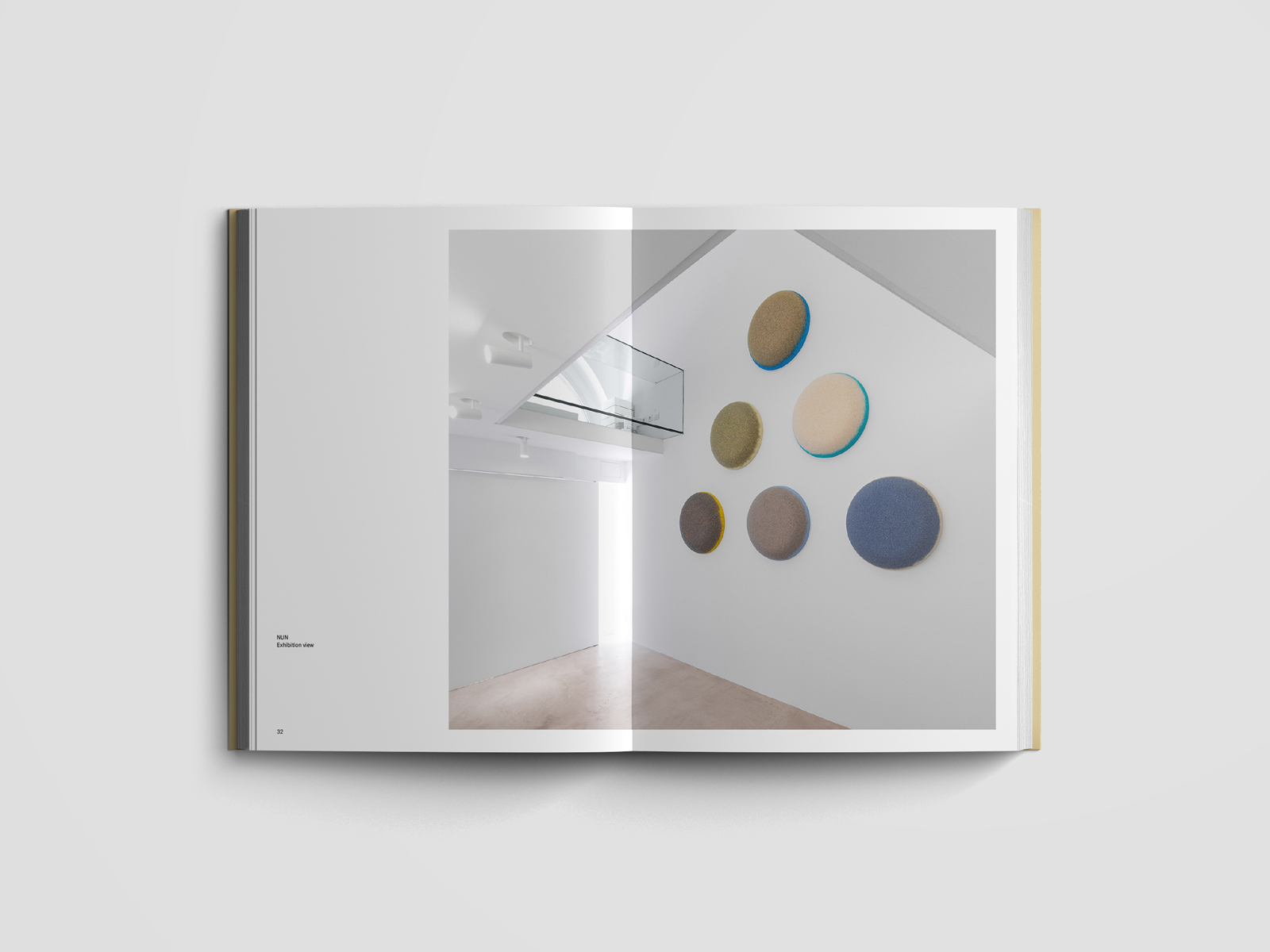Vincent Beaurin NUN
By Domenico de Chirico
5 Oct. - 16 Nov. 2018, Maab Gallery, Milan
"This universe is a unique animal that contains in itself all the animals, having only one Soul in all its parts." Plotinus, Enneads, IV, 4, 32, 1st original edition 3rd-4th centuries.
At the centre of the ancient Greek philosopher Plotinus's doctrine is the notion that unity is essential to life. For Plotinus Soul of the world - also known in Latin as Anima Mundi - is the vital principle out of which animals, human beings and plants take shape. This universal principle enables us to understand the lower degrees of nature and not vice versa. According to Plotinus, life does not assemble individual elements in order to create the most advanced and intelligent organisms because intelligence must already be present within life itself. However, ideas must remain intrinsically transcendent, expressions of the same intellect which, in thinking about itself, makes itself an object. Being and thought thus, form a unicum. In the aesthetic-cum-formal practice of the artist Vincent Beaurin this unicum might correspond to Nature, which, from a simple principle, causes the manifold to arise. Here, while each articulating and differentiating themselves with respect to their own individual specificities, single organisms/elements are in fact linked by a pre-conceived mechanism which only exists when it is divided into individual works.
The principle elements of Vincent Beaurin's work are all gathered here: the colours with all their energy; air and light; the body; the figure; sinuosity; sparkle; the unicum presents itself in the form of sparkling glass particles, each time continuously revealing itself in a different way in each of its parts, and, finally, abstraction in the sense of a pull towards a wider and more general vision that radiates in a constant game of coming and going. Light has a fundamental role in this cyclic movement; Beaurin's works are always full of brightness, almost as though we are dealing with works that keep the luminous element within themselves, and this brightness seems to refer to the previously mentioned unicum, divided yet united, and manifest in all its variety through a colour that slowly becomes material. His work as a sculptor consists in resolving and balancing reciprocal pressures, in particular those between a developing body and the space that contains it, while never forgetting everything that is already present in the space itself.
Three vertical, and motionless statues emerge from the primordial waters, identifying the dawn of the first day of time as it begins to come into existence; and all around is a chorus of concentric solids, otherwise known as Ocelles, conceived as ancestral forms. This is NUN, the divinity that existed before the world we all know was created , corresponding to the primordial waters in ancient Egyptian mythology, where the universe is based on the idea of abstraction; it is one of the eight divinities that form the Ogdoad that together represent the totality of primordial forces descended from the essence of chaos.
The connection with Beaurin's work seems immediately obvious: the statuary works seem like solids with ancestral features and precise characteristics, showing possible realities, visible yet impalpable, absorbent yet impenetrable, which gain their strength and regenerate themselves from the forms and chromatic power that are both absorbent and vigorous. Within themselves they possess the potential for generating everything, even in its apparent state of latency. Abstraction, in the philosophical sense of a process that leads to isolating one thing from the others which it is related to, and then to considering it as a specific object for inquiry, is a fundamental aspect in Beaurin's work. As Aristotle said, abstraction represents a fundamental moment in the cognitive process because it allows the enucleation of concepts, in other words intelligible knowledge. And so knowledge is prevalently resolved by considering the particular aspects of reality, by abstracting them, by separating them from the rest and looking into their singularity. Vincent Beaurin invites viewers to identify themselves with one or more abstract entities even though they are clearly characterised by historical references, a sort of encounter of a morphological kind that aims at reciprocally recognising and confronting their own limits.
Domenico de Chirico
September 2018

Polystyrène, résine époxy, verre
Ø 71 x 13,5 cm
Unique
Courtesy Vincent Beaurin et Maab gallery

Polystyrène, résine époxy, verre
Ø 71 x 13,5 cm
Unique
Courtesy Vincent Beaurin et Maab gallery

Polystyrène, résine époxy, verre
Ø 71 x 13,5 cm
Unique
Courtesy Vincent Beaurin et Maab gallery

Polystyrène, résine époxy, verre
Ø 71 x 13,5 cm
Unique
Courtesy Vincent Beaurin et Maab gallery

Polystyrène, résine époxy, verre
Ø 71 x 13,5 cm
Unique
Courtesy Vincent Beaurin et Maab gallery

Polystyrène, résine époxy, verre
Ø 71 x 13,5 cm
Unique
Courtesy Vincent Beaurin et Maab gallery

Polystyrène, résine époxy, verre
Ø 71 x 13,5 cm
Unique
Courtesy Vincent Beaurin et Maab gallery

Commisaire d'exposition Domenico de Chirico
Vue d'exposition
Maab Gallery, Milan

Commisaire d'exposition Domenico de Chirico
Vue d'exposition
Maab Gallery, Milan
